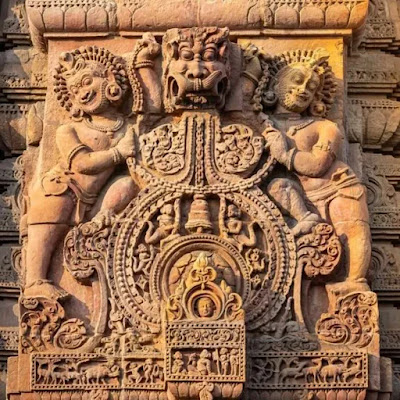Kirtimukha, a fearsome monster face with enormous fangs and an open mouth, is a prevalent feature in the architectural designs of Hindu temples in Nepal, India, and Southeast Asia.
What is Kirtimukha & What is its Significance?
Kirtimukha can be seen above the doors of all temples. It is also frequently observed in Buddhist architecture. Kirtimukha, known as Grasamukha in some places, also represents time or Kala.
The term "mukha" in Sanskrit denotes the countenance, whereas "kirti" signifies "fame and glory". In contrast to various mythical beings in Hindu lore, such as the makara sea-monster, the kirtimukha primarily serves as a decorative motif in artistic expressions. Its genesis can be traced back to a tale found within the Skanda Purana and the Shiva Purana.
Keeping Kirtimukha at Home according to Vastu Shastra
The Kirtimukha Vastu Nazar Raksha Mask, crafted from Brass, is said to possess the ability to safeguard against evil and eliminate vastu dosha when hung on the main door. This sacred artifact is believed to bring prosperity, well-being, and joy to the entire family. Widely utilized in Vastu Shastra, it holds significant power for positive influences. While placing a kirtimukha statue, it is important to keep it in a place of honor and respect.

Comments
Post a Comment